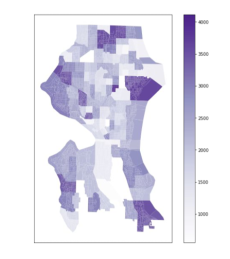ExaLearn Epidemiology

New infections in census tracks in a Seattle metro model that can vary R0 and several intervention strategies.
Investigators: Peter Nugent, Peter Harrington, Nicholas Choma, Jan Balewski
Affiliation: Lawrence Berkeley National Lab
ExaLearn is a project within DOE's Exascale Computing Project
This team is developing a deep learning-based surrogate model for Epidemiology codes. They are running FluTE, a publicly available stochastic influenza epidemic simulation model, and Corvid, an agent-based SARS-CoV-2 (COVID 2019) transmission model, on Cori. They have generated a training set of over 10,000 runs for the parameters of R0 and other intervention strategies, including Start Day for shelter-in-place, to see the numbers of infections generated per day for the next year.
About NERSC and Berkeley Lab
The National Energy Research Scientific Computing Center (NERSC) is a U.S. Department of Energy Office of Science User Facility that serves as the primary high performance computing center for scientific research sponsored by the Office of Science. Located at Lawrence Berkeley National Laboratory, NERSC serves almost 10,000 scientists at national laboratories and universities researching a wide range of problems in climate, fusion energy, materials science, physics, chemistry, computational biology, and other disciplines. Berkeley Lab is a DOE national laboratory located in Berkeley, California. It conducts unclassified scientific research and is managed by the University of California for the U.S. Department of Energy. »Learn more about computing sciences at Berkeley Lab.







